Consult with our experts to pick your prefect rug delivered to your door step.
Or start with the one closest to your desire from our catalogue, we will provide you with all the possible options
Showing 1–9 of 507 resultsSorted by popularity
Or start with the one closest to your desire from our catalogue, we will provide you with all the possible options
Bidjar rugs hail from the town of Bijar (Bidjar) and surrounding villages in the Kurdistan region of northwestern Iran. The area is inhabited largely by Kurdish people, and Bidjar carpets are often called the “Iron Rugs of Iran” due to their famed durability. Carpet weaving in Bijar has a long history; by the 19th century, Bidjar rugs were already prized in European markets for their sturdiness and were exported via the Silk Road trade routes.
The Kurdish weaving tradition is central to Bidjar’s identity – Kurdish weavers infused their own aesthetic and techniques, creating heavy carpets that could withstand harsh village life. They were typically produced on home-based looms in cottages and farmhouses around Bijar. Historically, the region experienced various influences: Persian, because of proximity to larger cities like Tabriz and Hamadan, and Kurdish tribal influences from the nomadic lifestyles.
This resulted in rugs that blend Persian design elements (like the Herati pattern) with a uniquely Kurdish construction. The town of Bijar itself experienced boom periods of weaving, especially late 19th to early 20th centuries, when demand surged and many masterpiece carpets were woven. Even as late as the mid-20th century, Bijar rugs maintained high prestige. Today, authentic Bidjar rugs continue to be made, often by Kurdish artisans, and they carry forward the legacy of one of the most robust rug-making traditions in the world, born in the highlands of Iran’s Kurdistan.
Bidjar rugs typically feature classic Persian motifs rendered in a robust, no-nonsense style. One of the most common designs in Bidjar carpets is the Herati pattern (also known as the “fish” or Mahi pattern). This consists of a repeating stylized flower with four attached leaves (often said to resemble fish) arranged within diamonds across the field. In Bidjars, the Herati is usually done in a relatively small scale, covering the field in an almost textured manner. Many Bidjar rugs also have a large central medallion with coordinating corner pieces, which could be oval or diamond-shaped, filled with floral details.
However, even with curvilinear medallions, the drawings in Bidjars are often slightly crisp and geometric due to the thick construction. Colors are typically deep and rich. A traditional Bidjar palette centers on dark reds, robust indigo blues, and rich terracotta or camel tones, with accents of ivory, yellow, or light blue for contrast. The backgrounds might be a dark blue or red with the pattern in lighter colors, or vice versa. A Bidjar’s border often showcases the Samovār (or Turtle) border pattern – a series of large, somewhat turtle-like floral palmettes linked by vines – or other classic Persian border designs, but drawn in the Bidjar style: slightly larger and sturdier-looking. Because of the dense knotting and heavy washing during finishing, Bidjar designs can sometimes appear embossed – the outlines of motifs stand out in relief, giving a dimensionality to the pattern.
Another characteristic: Bidjar rugs seldom have open empty space; they are usually filled to the brim with intricate motifs (whether all-over Herati or elaborate medallions with floral sprays). This creates an effect of weight and opulence. Occasionally, older Bidjars feature tribal motifs like stylized lions or boteh (paisley) if woven by a more tribal Kurdish group, but these are less common. Overall, the design features of Bidjar rugs embody balance and restraint – nothing overly whimsical – resulting in carpets that are elegant yet reserved, blending easily with many interior styles. Their patterns are often described as “restrained and unobtrusive”, enabling Bidjar rugs to complement a space without overwhelming it.
The hallmark of Bidjar rugs lies in their exceptionally dense and firm construction. Weavers in Bijar achieve this by using top-notch materials and a unique weaving technique. The pile is made from high-quality local wool – Kurdish wool is known for being sturdy and somewhat oily (rich in lanolin), which adds to the rug’s strength and sheen. Often, the wool is hand-spun, contributing to the durability of the yarn.
The foundation is typically cotton (warps and wefts) in most Bidjars, although some finer or older pieces might have wool wefts. One distinctive practice in Bidjar weaving is the use of multiple weft threads inserted between rows of knots – specifically, often one thick and one thin weft, or several tight wefts, beaten down heavily. After each row of knots, the weaver uses a heavy comb (and historically even moistened the wool or wood blocks under the rug) to pound the knots and wefts down fiercely. This compaction causes the pile to stand up almost vertically and pack incredibly tightly.
The knotting is usually symmetric (Turkish knot), reflecting Kurdish weaving techniques, though some Bidjars may also use Persian knots depending on the workshop. Knot density in Bidjar rugs can range from moderate to very high – commonly around 200,000 to 500,000 knots per square meter, with some fine “Bijar Tekab” pieces reaching even higher. Thanks to the vigorous beating process, even moderate knot counts result in a very stiff, heavy rug. You’ll notice that a Bidjar carpet is thicker and heavier than most other rugs of the same size. The pile is clipped medium-short to accentuate the clarity of pattern and to further tighten the wool.
When you handle a Bidjar, the rug feels solid; it’s not as flexible or floppy as other rugs. In fact, older Bidjars can be almost board-like (which is why they resist folding, and are often stored rolled). This heaviness is a result of both materials and technique, including often using wet wool weaving (weaving with slightly dampened wool wefts which shrink when dried, tightening the rug even more). Additionally, Bidjar rugs are known for using double wefts and sometimes an extra wool “packing” weft, which is unique to them.
All these technical aspects create a rug that is extraordinarily wear-resistant and can literally last for generations with minimal wear – the pile stands upright and doesn’t bend over easily, meaning foot traffic impacts it less. In summary, a Bidjar rug is constructed like the Persian rug equivalent of armor: top-grade wool, dense Turkish knots, heavy cotton skeleton, and a weaving process that compresses everything into a nearly impenetrable textile.
Bidjar rugs are ideal for high-traffic and utilitarian areas of a home while also serving as elegant decor. Thanks to their legendary durability, you can confidently place a Bidjar in entryways, hallways, and family living rooms – spaces where other rugs might wear out. A Bidjar runner in a busy hallway will shrug off years of footsteps with minimal signs of wear, and its dense pile means it even resists dirt embedding (dirt tends to sit on the surface where it can be vacuumed off, since the pile is so tight). These rugs also excel under heavy furniture.
You could put a Bidjar in a dining room and not worry about the weight of a large table and chairs; the thick cotton foundation and firm pile can handle it without distorting the rug. Similarly, in a home office, a Bidjar under a desk will endure an office chair rolling on it (though a chair mat is still recommended to preserve the pile from constant wheels). Bidjar carpets often come in sizes from small mats to sizable room rugs, but they are particularly common in runner and mid-size formats, making them great for foyers or large kitchens, where you need a sturdy rug. Design-wise, Bidjars have restrained, all-over patterns that don’t dominate a decor scheme, so they are fantastic for traditional or transitional interiors – for example, in a living room with patterned upholstery or busy drapery, a Bidjar’s subtle Herati field complements rather than clashes.
The dark, rich colors of many Bidjars also make them forgiving in spaces that see spills or soil (a dark navy and rust Bidjar can hide a small stain until you clean it). For bedrooms, a Bidjar can work very well if you prefer a firmer feel underfoot; some might find them a bit stiff for barefoot luxury, but their warmth and sound-dampening qualities in a bedroom are undeniable. They are especially good in a master bedroom or study where a refined, scholarly atmosphere is desired – the classic patterns evoke a sense of heritage and calm.
Because they lie so flat and solid, Bidjar rugs are also a top choice for placing under pianos or heavy cabinets in living rooms or studies; the rug will protect the floor and itself remain intact under the weight. In short, any room that demands a rug that can take a beating yet look classy is a candidate for a Bidjar. From a stylistic perspective, they fit beautifully in stately settings like a formal dining room, a wood-paneled library, or a busy family room that needs an indestructible rug. With a Bidjar, you don’t have to hold back – it’s a rug meant to be walked on every day without worry.
Bidjar rugs, given their exceptional quality, often represent excellent value for the money. They are typically priced in the mid to higher range for Persian wool rugs, but buyers receive a rug that can outlast many others. The cost of a Bidjar will depend on its size, age, and fineness. New production Bidjars (and Bijar-design rugs from workshops) can be pricey, reflecting the laborious weaving process and high wool content; however, they are still often cheaper than equally sized city silk or Kurk wool carpets like Nains or Isfahans. Vintage and antique Bidjars from the late 19th or early 20th century can command strong prices, especially if they are finely woven (so-called “Halvai” Bidjars) or in excellent condition.
Collectors respect Bidjars for their durability – it’s not uncommon to find 100-year-old Bidjars with almost full pile, which means antique dealers can sell these rugs as usable antiques, not just showpieces. That sustained usability keeps their market value higher than antique rugs that might be fragile. In terms of investment, while Bidjars may not appreciate as dramatically as rarer silk rugs, they hold their value well. Many rug enthusiasts consider a good Bidjar as a lifetime rug – you likely will never need to replace it, effectively amortizing its cost over decades of use.
There’s also value in the versatility of Bidjar’s design: because they can fit into various decor styles, a Bidjar rug can move with you from one home to another, still finding a place, making it a wise purchase that outlives trends. On the practical side, the maintenance costs for Bidjars might be lower over time since they are less prone to damage (for instance, you won’t be sending it for reweaving of worn spots or fringes as often as with more delicate rugs). This adds to their overall value proposition.
From a sales perspective, Bidjar rugs often sell themselves to informed customers – when you feel the weight and see the tightness of the weave, you know you’re getting your money’s worth in sheer material and craftsmanship. Occasionally, due to lesser fame relative to “Tabriz” or “Kashan,” one might find undervalued Bidjars at auctions or estate sales, making them something of a rug connoisseur’s secret bargain. But generally, they are recognized and priced for what they are: top-tier wool rugs. Ultimately, investing in a Bidjar means investing in a rug that you can use hard and still have confidence it will remain beautiful – and that durability and reliability is a form of value that many homeowners greatly appreciate.
If you’re considering a Persian rug that offers the best of both worlds – elegance and endurance – then you have every reason to buy a Bidjar rug. For many rug aficionados, a Bidjar is the pinnacle of practicality in the Persian rug family. You’ll often hear a salesperson highlight that Bidjars are called the “Iron Rug of Persia”; this is not just a nickname, but a proven reputation. When you buy a Bidjar, you’re purchasing a floor covering that can handle pets, kids, parties, and daily wear without losing its beauty.
For anyone browsing online, keywords like “durable Persian rug Bidjar” or “heavy Bijar carpet for high traffic” are common, because that is exactly why so many end up choosing Bidjars. They are a go-to recommendation for dining rooms and entryways (places where fine silk rugs wouldn’t be practical). Another compelling reason is the timeless design: Bidjar rugs have classic patterns that never go out of style – a Herati or a rosette medallion is always in vogue in traditional decor, so a Bidjar will age gracefully in your interior. If you enjoy rearranging furniture or moving homes, a Bidjar’s adaptable, subtle pattern will likely match new settings too.
Essentially, you can redecorate around a Bidjar, and it will still fit in. Also, consider the value: when you invest in a Bidjar, you’re likely not going to need to buy another rug for that space again. For cost-conscious buyers who still want luxury, that’s a huge draw – one and done, and done right. On a more emotional level, owning a Bidjar connects you to a tradition of Kurdish craftsmanship. There’s a pride of ownership knowing your rug was hand-knotted with such skill that it might outlive you! For those building a collection of rugs, a Bidjar is a must-have piece because it represents the epitome of what a high-quality wool rug can be.
And let’s not forget aesthetics: a finely woven Bidjar has a crispness of detail and richness of color that can rival more expensive rugs. The small, intricate motifs create a beautiful texture from afar and fascinating detail up close. So, why buy a Bidjar? – because you’re someone who wants a beautiful, authentic Persian rug that you don’t have to tip-toe around. You want a rug that works as hard as it decorates. In showrooms, when a customer hesitates between a delicate silk rug and a tough Bidjar for a living space, the salesman’s clincher often is: “With the Bidjar, you’ll never worry – it’s as tough as they come, and still gorgeous.” In short, buying a Bidjar rug is a decision you are unlikely to regret; it’s a rug that delivers luxury with peace of mind, making it a thoroughly satisfying addition to any home.
Caring for a Bidjar rug is relatively straightforward – these rugs are low-maintenance by nature, but a little care will keep them looking their best. Here are some tips:
Vacuum Regularly: Even though Bidjars hide dirt well, regular vacuuming is important because their dense pile can hold a lot of dust. Use a suction-only vacuum head or a vacuum with an adjustable height set high to glide over the rug. The stiff pile stands up to vacuuming nicely, but avoid aggressive beaters that might pull on the wool. Be gentle on the fringes, or use a handheld vacuum for the edges.
Rotate Occasionally: Given their weight, you might not rotate a Bidjar as often as a lighter rug, but try to do so once a year. This helps even out exposure to sunlight and traffic. If one part is under a heavy piece of furniture, consider moving the furniture slightly periodically to allow the wool to breathe and bounce back.
Use Rug Padding: Although Bidjars are hefty and often don’t slip, a rug pad is still beneficial. A pad prevents sliding on slick floors, provides a bit of cushioning (since Bidjars are very firm underfoot), and protects the underside of the rug. It can also help distribute weight if you have heavy furniture on the rug.
Prevent Moisture Accumulation: Because Bidjar rugs are so dense, if they ever do get significantly wet, it’s crucial to dry them thoroughly to avoid mildew. If you spill liquid, blot it up immediately. In a humid environment, ensure the room has good airflow; occasionally lift a corner to ensure no moisture is trapped beneath. That said, Bidjars’ tight weave resists liquid penetration better than most, buying you time in a spill emergency.
Professional Cleaning: Due to the thickness of Bidjars, when it’s time for a deep clean (usually every 5-7 years, depending on use), professional cleaning is the way to go. They will perform a full immersion wash or a gentle pressure wash that can get through the dense pile. DIY steam cleaners often can’t penetrate a Bidjar’s pile effectively. The good news is that Bidjars can handle vigorous cleaning methods without issue.
Watch the Edges: Keep an eye on the rug’s sides and ends. While Bidjar weaves are tough, the side bindings can loosen if caught repeatedly (like if a vacuum snags them). If you notice any fraying or wear on the edges or fringe, get it repaired sooner rather than later. Repair on a Bidjar is usually straightforward for a professional, and early intervention will keep the rug completely intact.
Avoid Folding: Because of the rug’s stiffness, avoid folding a Bidjar rug sharply; it’s best to roll it when moving or storing. Folding can cause creases or even crack the foundation fibers over a long period. If you must fold for short transport, fold it wool side out to reduce stress on the foundation.
By following these care practices, you’ll find your Bidjar rug remains almost as pristine as day one even after many years. These rugs don’t ask for much care, but they reward you greatly for the little you do. Essentially, treat it to regular cleaning and mindful handling, and your Bidjar will continue to be the hardworking, beautiful floor piece it’s meant to be, likely requiring fewer touch-ups than any other rug you own.
Bidjar rugs bring a subtle sophistication and incredible durability, enhancing many different settings. Here are a few inspired ideas for showcasing a Bidjar in your decor:
Elegant Entryway: Set the tone for your home by placing a Bidjar rug in the foyer or entry hall. Choose a runner or a smaller rectangular Bidjar with a rich, dark field (which hides dirt from foot traffic). Paired with a wooden console table and a mirror, the rug will impress visitors with its classic design and you’ll appreciate its resilience in this high-traffic zone.
Formal Dining Room: Under a dining table, a Bidjar shines. Its detailed pattern and deep colors create an intimate atmosphere for dinner parties. Because Bidjars are often thinner than shaggy rugs, chairs can slide smoothly. Coordinate with upholstered dining chairs in a solid fabric drawn from the rug’s palette (navy or burgundy, for example) for a cohesive, upscale look.
Cozy Study or Library: Imagine a quiet library with floor-to-ceiling bookshelves and a leather armchair – a Bidjar rug on the floor completes this scene. The dense Herati patterns complement the spines of books and the overall intellectual vibe. Plus, if you have a heavy desk or a grand piano in the study, placing it on a Bidjar is ideal since the rug can bear weight without damage.
Office or Commercial Space: For professional offices (law firms, executive suites, etc.), a Bidjar in the reception area or conference room conveys reliability and tradition. Clients walking in see the rug’s understated pattern and subconsciously note the sense of permanence and quality. The rug’s ability to handle heavy footfall and even rolling chairs means it will maintain its appearance in a busy office.
Bedroom Accent Rug: While you might not think of a Bidjar for a bedroom due to its firmness, they can actually work wonderfully as accent rugs on either side of the bed or at the foot of the bed. A pair of matching smaller Bidjar rugs flanking a bed adds symmetry and a touch of luxury (and saves your feet from cold floors in the morning). The motif quietly complements floral bedding or striped drapes because of its all-over harmony.
Under a Coffee Table in Family Room: In a family or TV room, a Bidjar rug under the coffee table can tie the seating area together. Its forgiving nature means you don’t panic if a drink is spilled during a movie night. Opt for one with a central medallion if your furniture layout will allow the medallion to be seen; otherwise, an all-over pattern Bidjar ensures every part of the rug visible around the sofa and chairs has visual interest.
In all these settings, the Bidjar rug serves both form and function. It elevates the aesthetic with its timeless Persian design, yet it’s one of the few fine rugs you can confidently place in active environments. These recommended settings highlight how a Bidjar can be the quiet hero of a room – not always flashy, but undeniably making the space more refined, and doing so with unmatched endurance. Wherever you choose to place a Bidjar, it will imbue the area with a subtle richness and stand up to the demands of that setting with ease.
As a family-owned Persian carpet shop, we bridge the gap between passionate collectors and skilled weavers, supporting both the artistry and the heritage of this timeless craft.
We guarantee fair prices for Original Authentic Persian Carpets
Address:
Shop No-GD 04, Dragon Mart 2 –
Dubai – United Arab Emirates
No.36 – 10th st. – Hafez Ave. –
Shiraz , Iran
Block 19 – Kooye Mohandesan –
Kish Island, Iran
Email info@letsgopersian.com
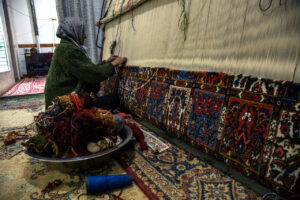
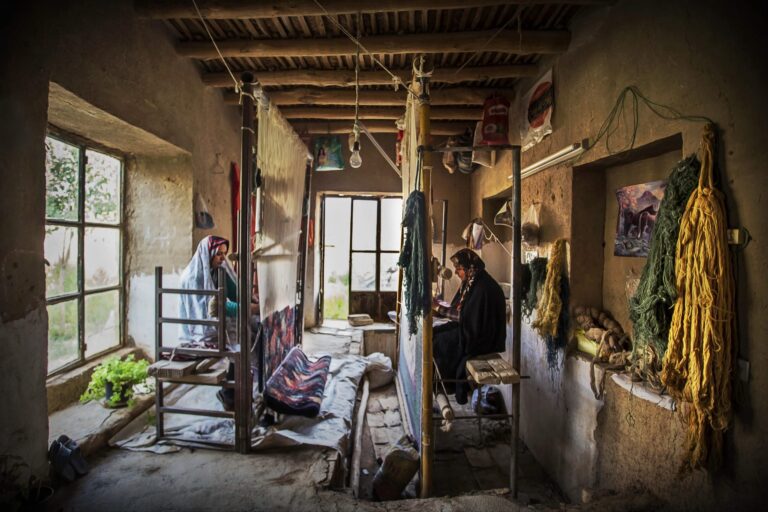
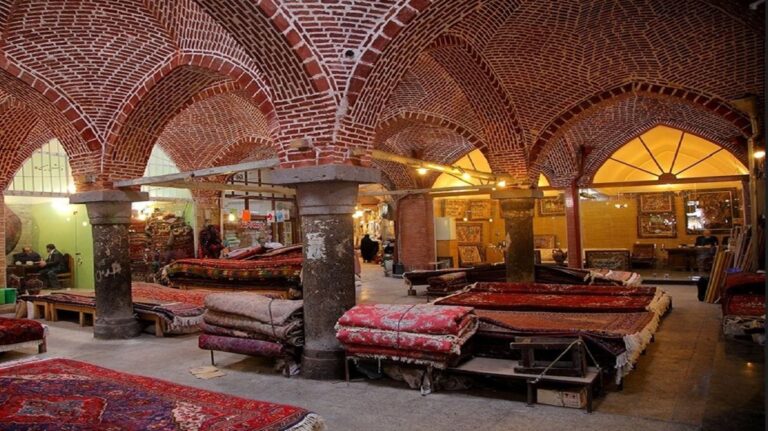
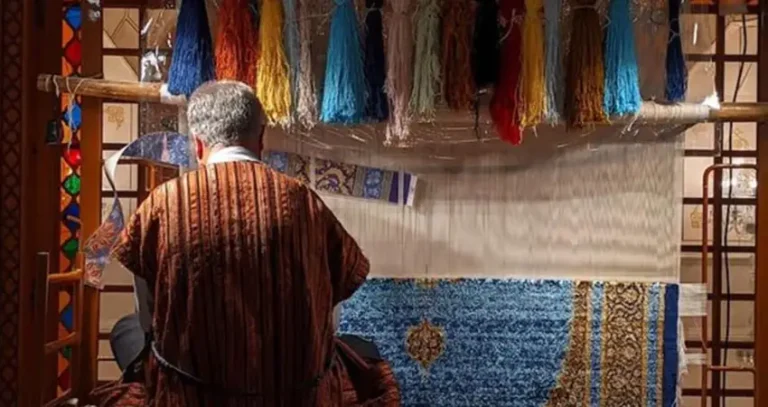
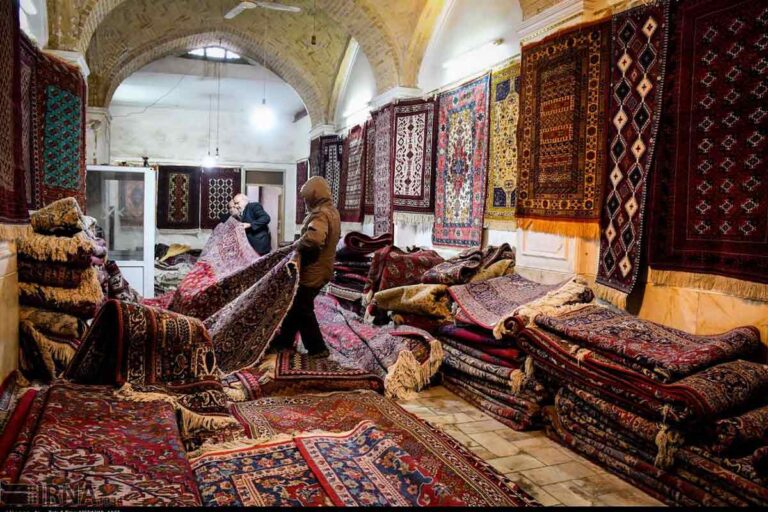
We bring you not just a carpet, but a masterpiece with a story — directly from the hands of Iranian artists to your home.
By working directly with artisans, we help preserve centuries-old traditions while offering our customers a chance to own a unique piece of original cultural heritage.